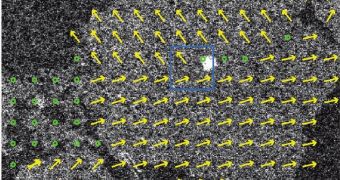In a first-of-its-kind experiment, researchers were able to determine the pathways used by electrical charges, as they are transported from one molecule to the next, inside organic thin films. The finding could lead to the development of brighter organic electronic devices.
But perhaps the most significant implication of the new study is discovering that it may be possible to modify the chemistry of such films in order to improve conductance. This may lead to a wave of innovations in this area of physics in the near future.
The study was carried out at the Molecular Foundry, a nanoscience center operated by the US Department of Energy's (DOE) Lawrence Berkeley National Laboratory (Berkeley Lab). The team here obtained the first experimental determinations of charge pathways in these materials.
According to researchers at the Molecular Foundry, organic electronics are also known as plastic or polymer electronics. The main difference from other types of similar devices is that they use carbon-based molecules as conductors rather than metals or semiconductors.
“We have shown that when the molecules in organic thin films are aligned in particular directions, there is much better conductance,” explains internationally-renowned nanoscale surface imaging expert, Miquel Salmeron, who was a member of the research team.
“Chemists already know how to fabricate organic thin films in a way that can achieve such an alignment, which means they should be able to use the information provided by our methodology to determine the molecular alignment and its role on charge transport across and along the molecules,” he adds.
“This will help improve the performances of future organic electronic devices,” says Salmeron, who is the leader of the Berkeley Lab Materials Sciences Division, and was also the leader of the research. A paper detailing the findings appears in this week's issue of the esteemed journal NanoLetters.
In addition to using carbon-based molecules, organic electronics are also cheaper, lighter and more flexible than their metal- or semiconductor-based counterparts. Until now, their main issue has been a low electrical conductance, but that may soon change.
“With our experimental results, we have shown that we can now provide answers for these questions,” Salmeron concludes.

 14 DAY TRIAL //
14 DAY TRIAL //